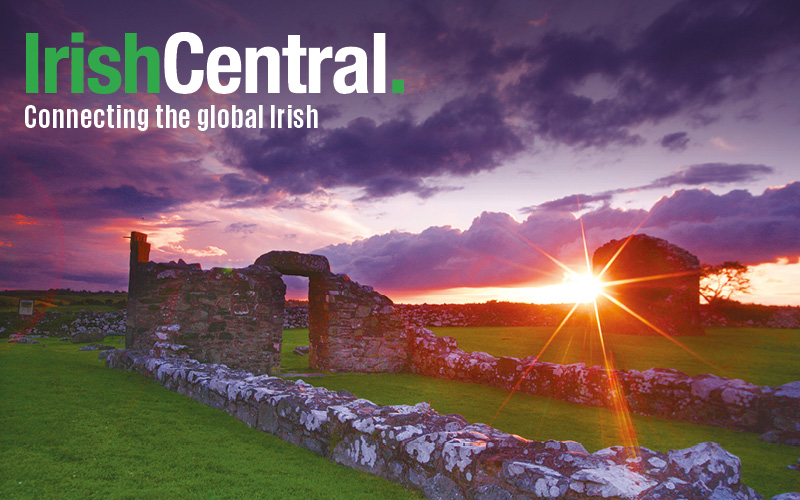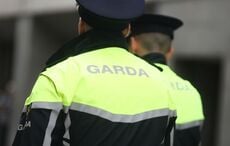Sinn Féin's historic victory in Ireland's General Election 2020 was a victory for left-leaning politics in an island dominated by the center-right.
On February 9, Sinn Féin's leader, Mary Lou McDonald, announced that her party "won the election. We have won the popular vote." Sinn Féin candidates secured huge victories during this month's election. This victory catapulted the party to the forefront of Irish politics to the astonishment of the media in America, the United Kingdom, and Ireland. Yet, it was no surprise to Mary Lou McDonald because her party expertly outmaneuvered and outsmarted Fine Gael and Fianna Fáil. It was a victory for left-leaning politics in an island dominated by the center-right.
Read More: Ireland’s government remains uncertain post-election
Since 1937, Fine Gael and Fianna Fáil have held a virtual stranglehold on Irish politics. Every Taoiseach, the Irish prime minister, has represented one of the two parties. Granted, the ideologies of the two parties have evolved from being free-market Catholics to being bastions of progressive neoliberalism, but Ireland has effectively been a center-right duopoly. These parties and their leadership will market Sinn Féin's victory as a "protest vote."
However, it is clear that the Irish people have demonstrated a deep dissatisfaction with the right-wing status quo and declared their preference for an alternative. Therefore, Sinn Féin gained votes as a left-wing party, but these were not guaranteed votes. The electorate could have supported Labour, the Green Party, or People Before Profit. Yet, Sinn Féin gained momentum because they successfully marketed themselves as a vehicle for change in a stale political system.
Over the last twenty years, Fine Gael and Fianna Fáil have pursued a corporatist agenda that has alienated many members of the working-class. After the recession of 2008, Fianna Fáil introduced a variety of austerity measures that involved €18.5bn in public-spending cuts and €12bn in tax increase measures. These cuts and tax increases included water fees, increasing tuition fees for universities, and cuts to healthcare.
In 2011, Fine Gael ousted its rivals from the government and pursued a decade-long love affair with corporations such as Apple and Google. They courted large corporations to the island with the promise of being a tax haven.
In 2016, the European Commission ruled that Apple owed Ireland €13 billion in taxes. Nevertheless, Fine Gael supported the American company over the Irish public.
By 2017, Leo Varadkar became the leader of Fine Gael and the Taoiseach of the Republic of Ireland. The world celebrated the ascent of Ireland's first openly gay and mixed-race leader. Fine Gael advertised itself as the party of social liberalization through its support of marriage equality and abortion reform.
These progressive policies and support for corporations meant little to Irish voters because they were not accompanied by economic reform. Instead of aiding the working-class, Varadkar demonized the poor with a €200,000 campaign titled "Welfare Cheats Cheat Us All." He was outspoken in his desire for tax cuts and welfare reform. Unemployment has fallen in recent years, but rent and housing prices have drastically outstripped wages. Rental prices in Dublin have skyrocketed by over 23 percent since 2014. These factors have led to an increase of over 280 percent in homelessness, with 10,000 adults and children living on the streets.
Homelessness and poverty go hand-in-hand, with 760,000 people in Ireland living below the poverty line. Children under 16 years of age account for almost 20 percent of all those in poverty.
Read More: Irish general election a Sinn Féin con job
Fine Gael and Fianna Fáil thought that this election was going to be fought in the trenches of progressivism and Brexit. However, they neglected the sheathing economic tension under the surface of Irish politics. Once again, Sinn Féin outfoxed their opponents by building a platform for "ordinary people." Their manifesto included plans to reduce rents by up to €1,500 a year, create 100,000 new homes within five years, increase paternity leave, and reduce the cost of childcare. The party promised to empower the economically downtrodden while maintaining the social politics that Fine Gael had pursued. Their platform was comprehensive and broad in order to create a coalition of supporters from urban and rural working-class communities.
In terms of Brexit, Fine Gael has been applauded for handling the situation, but Sinn Féin outthought them on this front too. Varadkar's reaction to Brexit has primarily been about steadying the ship in Ireland, but Sinn Féin has used the uncertainty of Brexit as a platform to push for a united Ireland. Varadkar has become the golden boy of Europe, but his party cannot claim the same electoral mandate over Irish nationalism that Sinn Féin has. Sinn Féin has run on an all-island platform for decades, and their stance on unity has been legitimized in recent years. For example, recent polls suggest over 50% of people in Northern Ireland and 70% in the Republic of Ireland support a united Ireland.
After their victory, Sinn Féin is the biggest party in Ireland because it has massive electoral mandates in the North and South. They are the only legitimate all-island political party, which makes them the solitary vehicle for genuine change. McDonald understands that momentum is on her party's side, and she has suggested that a unity poll will happen sooner rather than later. Indeed, McDonald has recently encouraged Europe to get involved by arguing, "the European Union needs to take a stand in respect of Ireland in the same way that it supported the reunification of Germany."
In the end, news outlets and politicians throughout the United Kingdom, Ireland, and America will continue to suggest this victory was "shocking" or a "protest vote," but Sinn Féin laid the groundwork for this political campaign since Brexit and they outsmarted their rivals at every turn. Sinn Féin promised radical change during a time when the center-right political order has become worn-out. They promoted the social and economic concerns of the working-class while other significant parties supported large corporations and austerity. They argued that they could deliver Irish unity while their rivals saw the issue as a pipedream furnished by a political party that was shackled to past links to the IRA. Pundits can debate if Sinn Féin could implement these policies in a government, but the fact remains that their victory occurred due to their simple and effective left-leaning platform.
Simply put, their vision for a more left-wing "Ireland of Equals" held more political and social capital, so it won the day.
Read More: The secret of Sinn Fein’s stunning success
This article was submitted to the IrishCentral contributors network by a member of the global Irish community. To become an IrishCentral contributor click here.




Comments